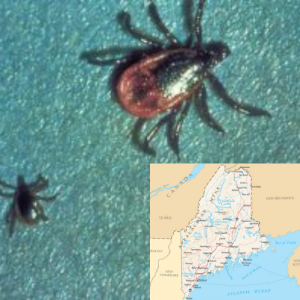By NewsDesk @infectiousdiseasenews
The Maine Center for Disease Control and Prevention (Maine CDC) reported a record more than 2,000 Lyme disease cases in 2019 and officials announce during this Lyme Disease Awareness Month that providers are already reporting cases in 2020, and the number will rise as we enter the summer months.
 This has prompted health officials to advise the public to be aware of tick bites that transmit not only Lyme disease, but also anaplasmosis ( a bacterial disease), babesiosis (a parasitic disease) and Powassan virus. Individuals bitten by the deer tick can acquire more than one infection.
This has prompted health officials to advise the public to be aware of tick bites that transmit not only Lyme disease, but also anaplasmosis ( a bacterial disease), babesiosis (a parasitic disease) and Powassan virus. Individuals bitten by the deer tick can acquire more than one infection.
Many individuals and families are spending more time outdoors during the COVID-19 pandemic. This may put them at increased risk of exposure to tickborne pathogens.
Symptoms of anaplasmosis include: fever, headache, malaise and body aches. Symptoms of babesiosis include: extreme fatigue, aches, fever, chills, sweating, dark urine, and possibly anemia. Symptoms of Powassan include: fever, headache, vomiting, weakness, confusion, loss of coordination, speech difficulties, seizures, and encephalitis and meningitis.
In 2019, providers reported 685 cases of anaplasmosis, 138 cases of babesiosis and two cases of Powassan.
What to do after a tick bite:
• Remove the tick properly, ideally using tweezers or a tick spoon.
• Clean the area around the bite.
• Instruct the patient to watch for signs and symptoms for 30 days.
• Identify the tick and the engorgement level, or the amount of time the tick was attached.
• Testing of the tick is not routinely recommended for clinical purposes because even if the tick
tests positive for Lyme, that does not mean it was attached long enough to transmit the disease.
Even if the tick tests negative that does not mean it was a patient’s only exposure.
Maine reports fivefold increase in hepatitis A cases last year
Maine reports 1st Eastern Equine Encephalitis horse case since 2013


One thought on “Maine Lyme disease: ‘Providers are already reporting cases in 2020, and the number will rise as we enter the summer months’”